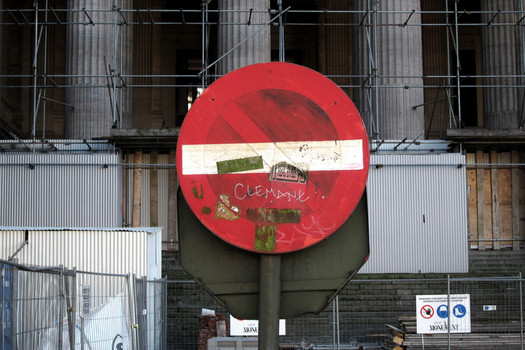
David Helbich, Palais de Justice, Brussels (not in book)
On a recent trip to Belgium, I was struck once again by how attractive the country’s domestic buildings are. Traveling by train and tram, I spent time looking out of the window trying to decide what it is about even the most modest Belgian houses that gives them a wonderful sharpness of outline and satisfying neatness of form — compared to, say, ordinary British houses, which tend, on average, to look much less characterful and considered.
With these positive environmental impressions in mind, the discovery, during my visit, of a new book of photographs titled Belgian Solutions Volume 1 (MediuMER) came as a sobering surprise. The phrase “Belgian solutions” is certainly not intended here as a compliment. The 300 photos, presented at 4 x 6 inches like routine snapshots, show an urban environment that appears to be something of a mess. The pictures document instances where people have tried to solve a problem or make an improvement, but it hasn’t worked. An extemporized fix — as in any of the photos shown here — might be awkward, illogical, ugly, ridiculous, baffling, or just funny. Once the solution has become part of the streetscape, the chances are that it will remain there along with other misbegotten fixes that also don’t work.
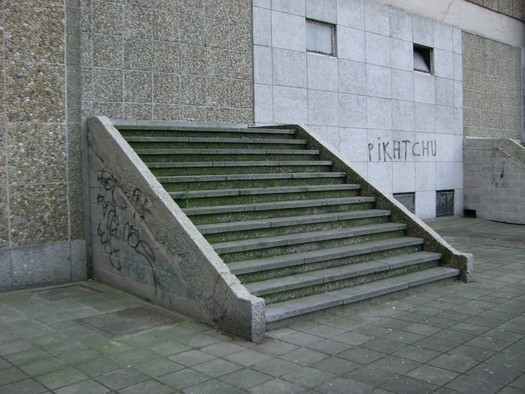
David Helbich, location unknown
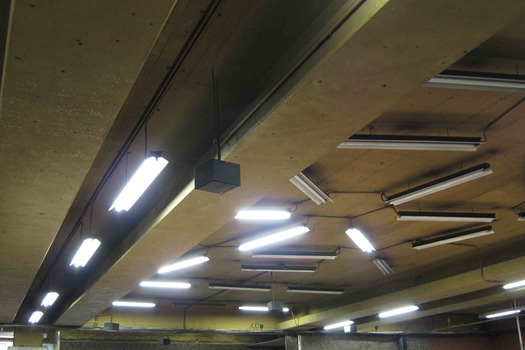
David Helbich, Metro Rogier, Brussels
The pictures are the perceptions of David Helbich, a German artist based in Brussels, who has lived in Belgium for a decade. This puts a slightly odd complexion on the project. It’s one thing to have a laugh at the expense of your own nation, but perhaps a mite ungracious, when you come from a country (excuse the cultural stereotype here) that’s renowned for its efficiency, to describe your host’s moments of embarrassment in such baldly national terms. Belgian Solutions is an undeniably arresting title, but do these pictures reveal uniquely Belgian modes of failure?
Obviously they don’t. You can encounter this kind of mishap anywhere that people build sprawling settlements. Neglecting things, making do, trying to patch up and mend inadequacies but not delivering a smooth and professional job is a universal tendency. It would be more accurate to dub the book “Human Solutions” and Belgian Solutions’ online HQ tacitly acknowledges this. On Facebook, where the project took off — there’s also a recently launched website — Helbich receives “Belgian solution” photos from contributors around the world, giving browsers an opportunity to chuckle with amusement at unfortunate street interventions discovered in Paris, Athens or New York (he has included 40 photos by other people in the book). I dare say Germany has a few of these gems, too. Still, it can’t be good news for Belgium if the adjective “Belgian” starts to gain currency as an international synonym for “dumb.” Nothing could be more mistaken or unfair.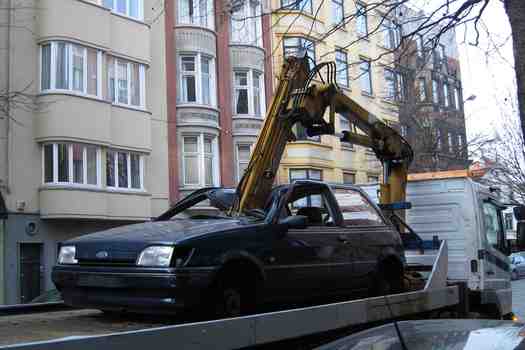
David Helbich, location unknown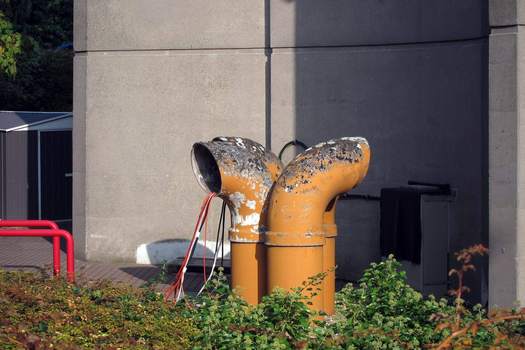
David Helbich, VRT radio and television studios, Brussels (not in book)
In case it’s not coming across, aside from misgivings about the venture’s name, I find this a fascinating project that makes a nicely understated book. Helbich’s pictures dwell on a phenomenon that has preoccupied me for a long time, and that has come to change my view of design, or at least my expectations of design’s possibilities. Design, the great would-be panacea, creates enclaves of relative harmony in the city. That so much does work reliably, and even looks halfway acceptable, is down — putting it very broadly — to design (I’m including architecture under this heading). Yet design’s ameliorations are always framed and circumscribed by the money set aside, the degree of political, civic and organizational will, and the resources made available. The uneven distribution of design’s attentions is particularly obvious when we make comparisons between the commercial sphere and the often less well tended public realm. Even when economies are thriving during years of boom, there are numberless locations and interstices in any city where the cash, and therefore design’s overhauls and renovations, never manage to penetrate.

David Helbich, location unknown
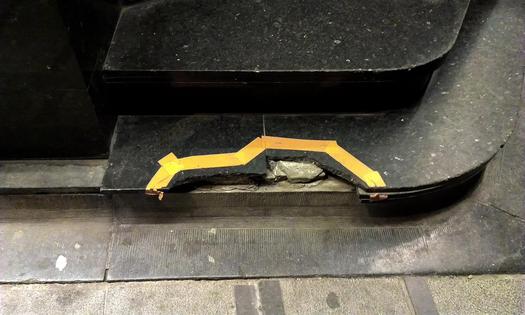
David Helbich, location unknown
See also:
New York: City of Spectacular Doors
Robert Brownjohn: Photos at Street Level
Herbert Spencer and The Book of Numbers
Typographic Stories of the City Streets


Comments [6]
10.30.13
12:36
10.30.13
12:37
10.30.13
12:37
http://uglybelgianhouses.tumblr.com/archive
10.30.13
03:10
See http://hadonejob.com/
11.01.13
04:19
11.03.13
05:50